
- Albumography
- Miscellaneous
- Bowie on Film

An interview with Viktor Manoel, Glass Spider Tour dancer.
Hello Viktor. How did your dancing career begin?
My career began with Mexican Folkloric dancing. I had an argument with my dad regarding my personal life choices, so I moved out and got into dancing. It was at that time that I performed “The Deer Dance” – then I turned 18 and began going to clubs, where I got into urban dance. Back then, I met several friends and we were part of a style known as “Punking”, later called “whacking”. I’m the last of those dancers.
At the end of the 70’s, dancing with that style, I landed an audition with Diana Ross, for a show in Las Vegas. I didn’t get that gig, but I did land a job with Grace Jones, and we would work together for three years. I then returned to the united states at the end of the tour and I began taking lessons, whilst also performing with an androgynous Punk group at a night club called “Peanuts”. That time began shaping my androgynous look, decked out with high heels.
Before working with David Bowie, what was your impression about his music? did you have any favorite albums?
Something that stood out to David was the fact I wasn’t a huge fan. I liked some of his songs, I remember “Fame” because it was a huge hit when I graduated from High School. Ironically, Grace Jones also had a song called Fame and I also auditioned for the film called Fame but I didn’t get the part.
So I liked Fame, Look Back in Anger, Cat People…but I wasn’t a fan, and he liked that.
How was your audition for the tour?
Toni Basil had come to see my shows at Peanuts, and she also attended some of my Jazz classes, at the time I had also begun teaching. She asked if I was interested in auditioning for David, and she said I had to bring in a Bowie track. I chose “Dancing With The Big Boys” because at the time my life was pretty difficult, and I craved to make something out of my talent. I think that because of the way I was, I could engage in meaningful conversations with David, we talked about art, books, ideas…he asked me what music I was listening to, and he asked for my opinion about bands that could open the show for him.

Above, Toni Basil & Debbie Harry with David in 1987.
What was it like hanging out with Toni Basil?
I met Toni in 1975, she was familiar with my urban dancing career but also my technical, more professional side, as I had the opportunity to work with big ballet companies in the united states. I looked younger than I was, at 23 I looked 16 but danced very professionally, so they wanted me to dance for them, and took me under their wing with a scholarship.
When I was young my teacher wanted to send me to Mexico to dance with Amalia Hernandez, but I declined. I was just beginning to figure out who I was as a person, and the last thing I needed was to relocate. I didn’t dream about being a famous person, I just wanted to make art, I never chased fame.
Tell me about your audition, you picked “Dancing With The Big Boys”. What did the song mean for you, and what choreography did it inspire you to perform? What impression did you make on David with it?
(Laughs) Ah, Dancing With The Big Boys! I was familiar with the song because I used it in my classes. For me, it meant that it was time to dance with the big boys, in the big leagues. Toni requested that I auditioned just like I danced at the club. Long hair, women underwear, an athletic cup and heels. I didn’t arrive to it with any choreography, it was all free-style, on the spot. When I came onstage, there were many urban dancers there, all straight, and they began laughing when they saw me. Me, being the way I am, got quite upset. That fuelled my dancing, and I danced my heart out, I even danced on top of the speakers. The ceiling was the only spot I didn’t dance on. When the song finished, their jaws where on the floor. They were like “What the fuck just happened?”. The day before I had auditioned for Madonna, “Who’s That Girl world tour”. It was different to the Bowie audition, because for Madonna you had to learn the choreography. That was a very intense period in my life, lots of people were demanding that I changed the way I looked, the way I danced, even my manager.
I auditioned for Madonna on Friday and for David Bowie on Saturday. I then went to church and prayed, I asked god to give me the big break with either one. I told myself: “Whomever, calls me first, that’s whom I’ll go with” because I didn’t want to have to choose between them.
Monday morning at 7 AM, my phone rang. I answered and it was Toni Basil calling me from New York. She told me “Pack your bags, we’re going on tour” I said what? and she told me “David watched your video…he just watched 30 seconds and he said who’s that guy? I want him on my tour” he didn’t even finish watching the full audition, he said “get me that guy”. I also landed the Madonna gig, I had to call the producers and tell them I wasn’t available, I thanked them and packed my bags for New York.
Correct me if I’m mistaken, did you make the Spanish dialogue for “All The Madmen”?
No, that was Carlos Alomar.
How did David define your role for the tour?
He told me I was going to represent his shadow, his past, and his consciousness. Toni video taped everything I did, not just the choreography but even when I ate, slept or practiced my moves. From time to time she would come over and say “Look at that you’re doing here…you see that? I want you to do that on stage”. A lot of my moves came from what they recorded on those tapes.
What was it like meeting David for the first time?
(Sighs) What was it like…well I’ve always been a very professional person. When I met him I approached the situation like a job, he was my boss. He had some requests for us, he wanted us to stand in front of the camera, and tell a joke. When it was my turn, I stood in front of the camera and I said “I don’t have a joke to share…because I don’t think the world is a funny place right now” many of my friends were dying from AIDS complications. He liked that, he said my intensity reminded him of Jim Morrison (laughs). When we were in Rotterdam, he stood me aside and began talking with me about the tour, the stage and all his plans. Then he started talking about AIDS and I told him “I know what’s happening, I’ve been seeing it from the very beginning”. He apologized, he said he didn’t mean to make me feel as if I wasn’t aware of it. I told him about my experience working in the film “Staying Alive” with John Travolta. That was the first time I heard about something that was happening, something that didn’t even have a name back then, some New York dancers told me about it, and I shared that with him.
Is that why Dancing With The Big Boys also resonated with you? because of the line “Something’s going on in society”?
What went through your mind the first time you saw the gigantic spider?
I loved it! on the other hand, David was very much looking forward to my reaction when he showed me my wardrobe. He feared I wouldn’t want to wear it. When he showed it to me he said “I want you to be an androgynous cross between Jim Morrison, Prince and a Bullfighter” I want people to look at you and not be able to figure out who you are…what you are. I told him “Of course, I’ll wear the clothes, they won’t wear me”. The interesting thing about the spider is that when I was a child I used to have recurring nightmare, that I was running in a field and suddenly I fell to the bottom of a well. Then a huge spider would come along and cover the well, blocking the light. That happened one time during rehearsal…I was lying on the floor and I gazed the spider’s belly, and it immediately brought me back to that nightmare I had as a child.
When he familiarised himself with my career he told me he wanted an androgynous character on stage, he was curious about what I experienced at those clubs. I used to wear blue contact lenses, and he also loved that…he told me he envisioned me as the mother spider!
What do you recall about the New York rehearsals?
They were wonderful…I have beautiful memories of those rehearsals. I love working, it makes me feel depressed if I’m not working, and those rehearsals were hard work. For me being on board that tour was the culmination of all I had worked for during my entire career. David was always filming everything, he would look back on those tapes with Toni and he would pick out what he liked. During our breaks we would talk about films, art, music…we had a similar sense of humour, but he was a lot more sarcastic. It was intense. I had to rehearse wearing high heels, for 8 hours. Picking up stuff, lifting people around. During the rehearsals, I called my answering machine to hear my voicemails and discovered I had a message from the choreographers and producers of Michael Jackson. They wanted me to make an audition for his Bad tour. I had to call them and thank them for the opportunity, but I declined because I was already committed to David’s tour.

What was it like working with the dancers in the tour?
I was already acquainted with Melissa Hurley through technical dance, Skeeter Rabbit through urban dancing, he was a “popper locker”. I met Spazz through Toni Basil in the early 80’s and I had heard about Constance, as she was beginning to become known in the scene. Working with them was interesting and also challenging, but at the end of the day we were all friends. I was the dance captain, I was the one who looked into having the dance crew insured. During rehearsals we were throwing David around and I asked “what’s gonna happen if we hurt him or if he falls down? Who’ll be getting sued?”. There were some moments of tension, I had to be very strict with them, in part because that’s the way I work and also because it’s what Toni had asked me to do. I was familiar with the business side of dancing, and they were not concerned with that, so I was the only one wondering what would happen if David got hurt. That’s when I got insurance for each one of us, it was something new at the time but nowadays all dancers on tour are insured.
Was it daunting to perform at those enormous stadiums?
Funny you should ask that. At the beginning of the shows, I would descend from the same spot as David, from the top of the spider’s head! I would arrive to the shows 2 hours before the rest of the guys…I would inspect the stage and I treated the dance floor as my home. I would say hello to everyone involved, the crew, the catering…I would then lie down for a moment on the floor before putting my make up and costume on. David was curious why I could perform in front of those large audiences and not feel nervous. He asked “have you ever been afraid before, have you been nervous about dancing?”. I told him I arrived early to get acquainted with everything and everyone, to feel at ease before performing later, that helped me relax.
David had very fond memories about the concert in Berlin, he recalled singing “Heroes” that night to the city still divided by the wall, and how it was the most emotional and significant performance of the song for him. Do you recall that night as well?
Yes!…(laughs). Everytime I went up and down the spider I could hear police sirens, I could even hear the people singing his songs. It was overwhelming, it made me cry. I broke down and he was worried about me, he could see it was having a big impact on me. He said “Are you alright?” and I told him “No…that wall shouldn’t be there, it’s not ok”. I remember the police, the screams, it all affected me deeply. The next day he took the dancers to the other side of Berlin, but he didn’t take me along. Coco came to tell me he wasn’t bringing me along, and wanted to make sure it was ok for me and I told her “Of course, I understand…I don’t want to see”.

Time was one of your favorite songs during the shows right?
Yes, absolutely. Time is still one of my favorite Bowie songs, because of the lyrics. I loved seeing him perform that song, descending like an angel. It was thrilling, and it moved me each time.
The tour is now considered pioneering in its own right, because of the ambitious stage set up and all the theatricality, preceding stadium shows from other artists that would also adapt massive props. Back then, did you feel you were taking part in something ahead of its time?
Of course! It totally felt that way. You know, he organized a meeting with us, because things changed when the tour got to America. Several songs were dropped, including my number, which was Dancing With The Big Boys, in favour of more hits. David knew the tour was ahead of its time, it’s a pity people didn’t know. I think they are still processing it in the present. After Glass Spider I noticed a lot of tours that were trying to look like it. I can’t speak for the other dancers, but I did feel like we were doing something transcendent.
So your favorite song was dropped from the setlist, was that the same meeting where David told you not to mix art with business?
Yes, and he told me not to take anything personally. Artistically, David was like my big brother during that tour, so of course he wanted to make sure I understood why the changes happened, he didn’t want to make it seem like we didn’t matter. He also warned me to never let my talent become the only thing that defined me.

There are some really superb recordings of the tour out there, like Sydney, Ottawa, Platz der Republik, Montreal…have you heard all of these shows?
I don’t really go out of my way to listen to every recording from the tour, I have to be picky about what I hear, because memories do come flooding.
Do you enjoy watching the DVD?

Of course! I enjoy it. David loved the parts when I strutted across the stage and all eyes were on me, instead of him. He really liked that. He gave me a huge opportunity, I see the tour and the pictures through his eyes, because he was very kind with me.
Do you feel the Glass Spider DVD is a good representation of what it was like to witness the tour, or it falls short?
It represents the time when the tour changed, I enjoy watching it. The overall tone of the show changed dramatically.
What was it like shooting a music video with David Bowie ? ( Time Will Crawl)

That was very, very interesting…look closely at the shots where they used me, the parts of the lyrics where I’m seen, it’s not random. He got a kick out of how I understood the references in his lyrics, I could tell which books he had read. David was so intelligent, but also incredibly kind, he gave us the floor and we felt free to express ourselves. He’d then fetch his camera and record.
It’s been mentioned there is a shelved version of the video, the one we’re all familiar with being the second version. Do you have any insight into this discarded video?
It’s more or less the same, just different angles and different lighting.
I’ve read people describe David as a “tour guide” of sorts when they traveled with him, because he was so informed and so well read about all the places that he visited. Did you enjoy seeing the world with him?
Yes, he was like that. However, I did not go out that much during the tour. I had a bad experience in Italy and afterwards I decided to avoid going out. I didn’t appreciate people screaming or running after us when we were out with him. I didn’t enjoy that side of touring, going out and having people approach you, I valued my privacy. David gave me a character to work with on stage, that was all.
What did you use to do during the extended drum solo after “Big Brother”?
I was always observing by the side of the stage, just in case anything happened. Once, when they were doing Fashion, David dropped the batteries of his microphone. I gazed at them on the floor. I grabbed a mic, turned it on and rushed to deliver it to him. He stared at me for a moment and then began singing. So yes, I was observing everything going on.
What about that rumour that the spider was set on fire at the end of the tour?
Haha, I don’t know what to tell you about that, as I wasn’t there when it allegedly happened. Maybe he did, maybe he didn’t, who knows! (laughs).
Never Let Me Down was re-worked in 2018 according to David’s wishes, he stated he wanted to re-do the entire album but only worked on one song. Then the rest of the album was tackled by a team of his trusted collaborators. Have you heard the 2018 album? What do you think about it?

I’ve heard some of the new recordings, such as Glass Spider. I prefer the raw quality of the original album, it sounds like it had been recorded in a garage, it’s beautiful and simple.
What career opportunities landed after you had a David Bowie tour under your belt?
There were a lot…but I also declined a lot. It was an incredible opportunity. But a lot of people wanted me to do exactly the same thing. It caused me a lot of stress. I got rid of my long hair, I wanted to leave things behind and move on to the next thing. I didn’t want to participate in something I didn’t believe in. If the artist I was going to dance for didn’t stand for something I felt personally connected with, I preferred not to take part. I don’t want to dance just for the sake of doing it.
Do you have any fun memories of the tour?
A ton! Here’s one for you: at the end of the tour everybody was asking David for his autograph, but I didn’t ask him for it. To me it was work, I was not there as a fan, so why would I ask him for an autograph? When I returned home and I unpacked my stuff, I found the tour book they had given us, and it had an earmarked page. He insisted on signing it! (laughs).
Last question, how did you react to the news of David’s passing and what did you think of Blackstar?
It was very interesting…I was chatting with a friend of mine whom was the book keeper for Duran Duran, and we talked about David’s birthday. That sunday I had a dream…in my dream he was trying to give me a phone call but he couldn’t grab his phone. When I woke up I began reading the news and somebody had sent me the Lazarus video. I heard the song and was struck by the lyrics. All the things going on in the video…they reminded me of conversations we had had about Judy Garland, Over The Rainbow and the Narnia closet. And then he said “Dropped my celphone down below”! I still dream about him and I always remember that during the year we worked together he was always concerned about my well being, physical and emotional. What I stood for at the time, was not widely accepted, and he worried about me.
Interview by Francisco Beristain, exclusively for David Bowie News. © 2021.
Edited by Nick Vernon.
Many thanks to Viktor Manoel.

Share this:
- Share on Tumblr
Comments are closed.
Recent Posts

Contact & Socials
David Bowie News | Celebrating the Genius of David Bowie.
Email us: [email protected]
You can also LIKE us on Facebook at Facebook.com/DavidBowieNews
Follow us on Instagram: @davidbowienews
Twitter: @davidbowie_news
Threads: @davidbowienews
#BowieForever
Opening on the 30th May 1987, The Glass Spider World Tour visited fifteen countries and produced eighty-seven performances, as well as nine promotional press shows. The band consisted of: David Bowie (vocals, guitar, saxophone), Carlos Alomar (guitar), Peter Frampton (lead guitar), Carmine Rojas (bass), Alan Childs (drums), Erdal Kizilcay (keyboards, trumpet, congas, violin) and Richard Cottle (keyboards, saxophone). The dancers were: Melissa Hurley, Constance Marie, Craig Allen Rothwell (aka Spazz Attack), Viktor Manoel and Steven Nicholas (aka Skeeter Rabbit). In March before the tour started, a number of Press Shows were given in various countries. The band for these performances consisted of: David Bowie (vocals), Carlos Alomar (guitar), Peter Frampton (guitar), Alan Childs (drums), Carmine Rojas (bass) and Richard Cottle (keyboards).
- Rockers Toured in 1984 & 2024
- Phish Sent Drew Carey a Blender
- Rolling Stones Tour Kickoff
- Wyman Dreams of Stones Tours
- Dickinson Chastises Smokers

When David Bowie Launched His Eye-Popping ‘Glass Spider’ Tour
David Bowie was a performer ahead of his time – in his music, his image and his live performances. His 1987 Glass Spider tour was the biggest live spectacle of his career, an undertaking so massive that Bowie would never attempt to repeat it, despite the trek's success.
The tour was in support of the Never Let Me Down album, which was intended as a return to rock for Bowie after exploring mainstream pop on previous releases. He conceptualized a big, bold, innovative experiment in blending an arena rock show with theatrical elements, groundbreaking staging and choreography.
"It's written and structured with various thematic devices," Bowie said at the time. "If this works the way I hope it does, then the next step for me will be to write a piece specifically for arenas and stadiums, which is almost like taking a musical on the road that has one narrative form all the way through, with a cast of characters, and is written for epic theater. I'm testing the waters with this tour."
Bowie assembled a team that included five dancers (under the direction of choreographer Toni Basil, famous for the No. 1 hit "Mickey"), saxophone, trumpet, congas and violin. He tapped Peter Frampton – who had just launched a semi-successful comeback after several years of retirement – to play guitar on both the album and tour.
Watch David Bowie Perform on the Glass Spider Tour
The entire ensemble rehearsed for 12 hours a day in New York before kicking off the tour on May 30, 1987 at Stadion Feijenoord in Rotterdam, the Netherlands. The set list included the bulk of the new album, as well as a number of lesser-known songs from Bowie's catalog. The massive stage set consisted of a giant spider with vacuum tube legs that were lit from the inside, and Bowie would emerge from the spider's head for the show's dramatic encore.
The tour was financially the most successful of Bowie's career to that time, but both it and the album it supported were met with a mixed critical reception. Though Bowie would later state that he felt the tour paved the way for many elements that became important in subsequent live productions from other acts, he found the rigors of the show so exhausting that he chose to scale down his future road shows.
The tour was documented in a popular home-video release, Glass Spider , a year later in 1988, and then released on DVD in 2007.
Every David Bowie Single Ranked
More from ultimate classic rock.
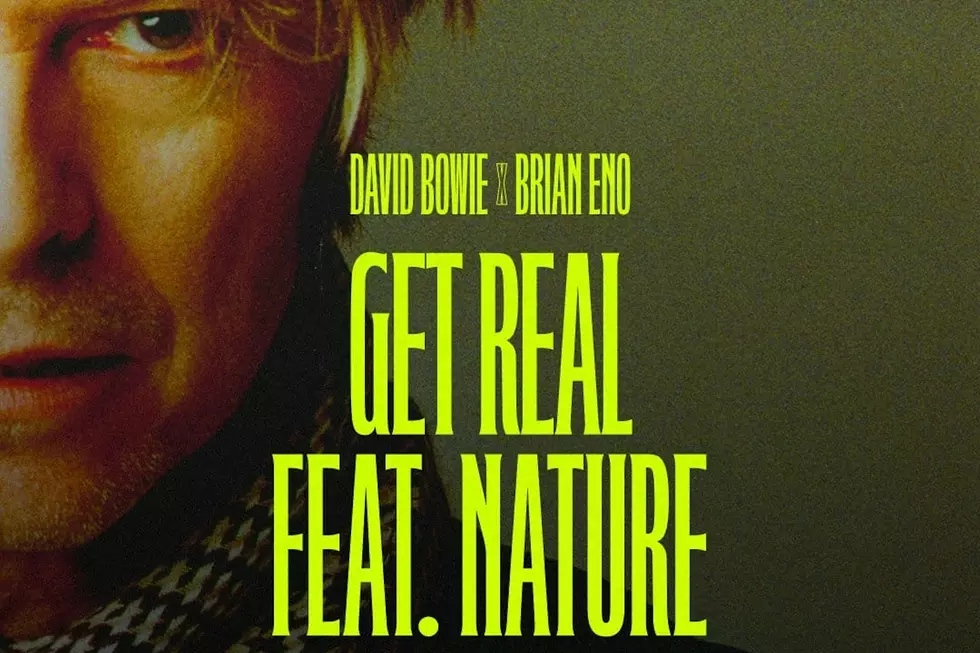
David Bowie’s 1987 Slump Held Its Own Weird Magic
His much-maligned album Never Let Me Down and the dazzling Glass Spider Tour it spawned were the work of a veteran artist in the throes of metamorphosis.

In his 1980 song “Ashes to Ashes,” David Bowie sang of how his long-running character, the doomed astronaut Major Tom, was “hitting an all-time low.” Seven years later, Bowie found himself in similar straits. Never Let Me Down , his seventeenth album, was released in April of 1987 to middling sales and critical hostility. It was his first album in 16 years to fail to crack the British Top Five. The Glass Spider Tour, lavish and overstuffed, kicked off a month later and was equally panned. As the magazine Smash Hits trolled at the time, “If Dame David Bowie is such a bleeding chameleon, why, pray, can’t he change into something more exciting than the skin of an aging rock plodder?”
Bowie turned 40 that year, and he became caught in a backlash against rock’s aging aristocracy. He’d pulled off a coup at the start of the decade with the massive, career-boosting success of his album Let’s Dance , but by 1985, he was hamming it up with Mick Jagger during their hollow cover of Martha and the Vandellas’ “Dancing in the Street.” The slickly produced and tepidly executed Never Let Me Down was panned as being just as self-indulgent. Time hasn’t softened that consensus. Thirty years later, in his book On Bowie , Rob Sheffield called Never Let Me Down “an all-time low”—as if to echo Bowie’s own lyrics in “Ashes to Ashes.” Lesser albums by popular artists are routinely relegated to the dustbin of history—or at the very least, the tail end of online rankings and listicles. But there’s as much to be learned from the dead ends and disappointments of great artists like Bowie as there is from their triumphs and masterpieces.
Recommended Reading

Capturing David Bowie

David Bowie's Perfect Farewell

The Resurrections of David Bowie
Never Let Me Down , ironically, was one of Bowie’s biggest letdowns. There was a sly self-awareness about his conversion from cult figure to mainstream figurehead following Let’s Dance , a quality sorely missing from the plasticity of Never Let Me Down . The track “Shining Star (Makin’ My Love)” is stiff and static, and it’s marred even further by a rap verse from the actor Mickey Rourke, who spits some egregious rhymes about Leon Trotsky and Adolf Hitler. Listless arrangements and cellophane-thin tones render the songs as robust as soda fizz. “Too Dizzy,” a song so emblematic of ’80s blandness that it makes Phil Collins sound like Otis Redding, was even removed by Bowie from the album’s reissues. “What, for me, was a bitter disappointment was the way [ Never Let Me Down ] turned out. It wasn’t played with any conviction,” Bowie laments in Christopher Sandford’s book Bowie: Loving the Alien . “It was studio-fied to such an extent that, halfway through the sessions, I was going out to lunch and just leaving everyone to it.”
For all of Bowie’s self-deprecation, Never Let Me Down actually marked an upward creative shift. The artist had more songwriting credits on the album than he did on either of his two previous albums, 1983’s Let’s Dance and 1984’s Tonight . And for the first time since 1980’s Scary Monsters (And Super Creeps )—the album that contained “Ashes to Ashes”—he does more than just sing; he contributes guitar, harmonica, and keyboards to the recording, closer to the hands-on process he used in his ’70s prime.
Two of the album’s singles, “Day-In Day-Out” and “Never Let Me Down,” fare far better in retrospect than much of the pop-rock of 1987. The former song, despite a muddled if well-meaning message about urban poverty, boasts brassy hooks and a gutsy vocal performance from Bowie; the latter is a mix of crooning atmosphere and sultry danceability drawn straight from his Let’s Dance playbook. Meanwhile, deep cuts and B-sides like the anthemic “Zeroes” and the stripped-down, infectious “Julie” were overlooked in the rush to tag Bowie as yet another ’60s-spawned rocker who, by 1987, had lost his luster.
It’s easy to see why Never Let Me Down left so many Bowie fans and critics crestfallen. After a three-year break from releasing studio albums, this trailblazer known for his restless innovation and reinvention seemed content to tread water. But judged on its own merits, the album reflects an interplay between social consciousness, rosy nostalgia, and Bowie’s growing desire to reconnect with his craft—the superstar remembering he’s a songsmith.
Nowhere is that more evident than on “Glass Spider.” Buried in the middle of Never Let Me Down , the track is a throwback to Bowie’s high-concept work of the ’70s, most obviously Diamond Dogs and The Rise and Fall of Ziggy Stardust and the Spiders from Mars . It begins with a poetic, spoken-word monologue detailing a mythic creature who would decorate its web with the bones of its prey, “creating a macabre shrine of remains.” What follows is a haunting phantasmagoria tailor-made for newbies who had bought into Bowie after his major work of 1986—a starring role in Jim Henson’s dark fantasy film Labyrinth . At the same time, it dog-whistled to his longtime fans who missed the theatrical, science-fictional Bowie of old. Stark and exquisite, “Glass Spider” remains one of Bowie’s great, underappreciated songs.
The Glass Spider Tour was a more complicated affair. Bowie launched it in May of 1987 with a series of press releases around the world, in which he claimed that the upcoming concerts—spread across seven months and three continents—would be “overflowing with makeup, costumes, and theatrical sets.” It being the excessive ’80s, quantity conferred quality. The set included a 60-foot-tall illuminated spider that hovered menacingly over the stage. Bowie descended from that monstrous prop every night, seated in an office chair and reciting his monologue from “Glass Spider,” except for the nights when it was too windy to safely permit it. The stage show was comically extravagant, with up to a dozen dancers and instrumentalists flanking Bowie at any given time. A loose narrative drove parts of the performance, but the interstitial bits mostly added up to flimsy excuses for catwalks, scaffoldings, garish jumpsuits, astronaut costumes, and lots of gold lamé.
Yet this was Bowie. Although he’d dialed back his thespian tendencies since Let’s Dance , was it really so unreasonable to see him back under the veritable proscenium arch? Critics thought so. This was the year that the most buzzed-about rock album was U2’s The Joshua Tree , released in March—an album that heralded a wholesale rejection of early-’80s glitz in favor of a gritty, earnest air of dressed-down authenticity. Framed in that context, the magazine Sounds dismissed the tour as “frenzied schlock and half-baked goofing.” Chris Roberts, a former staff writer at Melody Maker admitted in David Buckley’s book Strange Fascination , “There was overwhelming peer pressure not to like [The Glass Spider Tour].” Yet, Roberts added, “It was ambitious, challenging, weird, strange, mental, and barmy, and that’s got to be good.”
Indeed, The Glass Spider Tour is as underrated as Never Let Me Down . Released as a concert movie in 1988, Glass Spider shows an acrobatic, outlandish troupe backing their equally larger-than-life frontman. The famed guitarist Peter Frampton, a childhood friend of Bowie’s, adds a fluid virtuosity to the longtime guitarist and bandleader, Carlos Alomar, who performs intrepidly with his hair sculpted into punky spikes. The set list ranges from classics like “Rebel Rebel” to fan favorites like “Sons of the Silent Age,” and from fresh singles like “Day-In Day-Out” to covers of two of Bowie’s prime influences, The Stooges and The Velvet Underground. It’s spectacular, beautiful, charmingly pretentious, and weirdly magical. Dwarfing everything is the six-story spider hunched over the stage—as impossibly grandiose, intimidating, and iconic as Bowie himself.
After the tour ended in New Zealand in November, the band and crew ceremoniously destroyed the massive prop. “It was so great to burn the spider in New Zealand at the end of the tour,” Bowie recalls in Strange Fascinations . “We just put the thing in a field and set light to it. That was such a relief!” Whether or not he realized it at the time, it was a symbolic act. Soon after returning home, Bowie began a new project that would signal a rebirth of sorts: the rock band Tin Machine, a lean, back-to-basics quartet whose self-titled debut in 1989 presaged the rise of alt-rock and grunge. Having hit the height of ego and extravagance on The Glass Spider Tour, Bowie submerged himself in a humble group that erased his name from the marquee. Tin Machine wasn’t particularly well received either, but it put Bowie back on the path of relentless reinvention he’d been walking since the ’60s. He didn’t have to hit rock bottom to get there; he had to be hoisted 60 feet in the air.
Never Let Me Down may indeed be a midlife crisis set to music, an album expressing longing for the glamour of youth as well as a confused desire to recapture it. But there’s nothing inherently wrong with that; it’s no less valid than an album written in the passion of post-adolescence or under the shadow of death. Bowie himself delivered all of the above, and everything in between, throughout his half-century-long career—up to and including his sprawling swan song, 2016’s Blackstar . But with Never Let Me Down , and the attendant spectacle of The Glass Spider Tour, Bowie unwittingly painted a jumbled, overambitious self-portrait of a veteran artist in the throes of metamorphosis. It was uncharted territory, even for a man who built an identity around changes. Which is why, for all its flaws, Bowie’s 1987 work remains some of his most audaciously dazzling, and some of his most human.
- Share full article
Advertisement
Supported by
Bowie Creates a Spectacle
By Jon Pareles
- Aug. 2, 1987
''ROCK HAS BEEN SO ASSIMI-lated in the culture now that it doesn't have the kind of muscle it used to have,''
David Bowie said the other day. ''I want a performance to upset people to a certain extent, to keep people interested so that they say, 'Hey, you can do that stuff - I'm not quite sure what it meant but it was really exciting.' ''
Mr. Bowie has garnered exactly that reaction -along with a few dismissive hoots - again and again for his concerts and video clips over the last 15 years, productions that have been a crucible for rock and theater. His latest synthesis will be seen tonight at Giants Stadium in one of the most elaborate rock shows ever mounted - the 27-song, two-hour-plus concert titled ''The Glass Spider Tour.''
Under the dangling legs of a huge (60 feet high by 64 feet wide), translucent spider, Mr. Bowie, a five-piece band and five dancers will present stadium-scale, rock-driven, imagistic music theater, the most ambitious effort yet from rock's most self-conscious actor. Through the years, Mr. Bowie has taken time away from rock to work in films (''The Man Who Fell to Earth,'' ''The Hunger,'' ''Labyrinth,'' ''Absolute Beginners'') and on the stage (''The Elephant Man,'' Bertolt Brecht's ''Baal''), choosing roles as outsiders, freaks, even monsters. But from the beginning he has played his most ambiguous roles while singing with his band.
The scale of Mr. Bowie's current project is daunting. The ''Glass Spider Tour'' stage, sound, light and video systems take four to five days to assemble; they'd be a tight fit in Madison Square Garden, according to the set designer Mark Ravitz. To tour the United States, two identical setups, each costing more than $10 million and weighing 360 tons, are leapfrogging one another so that the show can go on two or three times a week. A third setup is currently being built. The payroll for the tour involves 150 people (including performers, construction crew, electronics specialists and 40 truck drivers) and adds up to about $1 million a week.
Mr. Bowie is at home in elaborate staging. In 1972, he created a sensation by turning himself into Ziggy Stardust, an androgynous extraterrestrial pop star whose rise and fall convinced a wave of male rockers to try eye shadow and platform shoes. By the end of the tour (which was filmed in 1973 as a documentary by D.A. Pennebaker), Mr. Bowie had added a finale in which he wore a black-on-black costume and sang a Velvet Underground song, anticipating punk rock. Each successive tour unveiled a new persona. In 1974, Mr. Bowie mounted a $250,000 production based on his album ''Diamond Dogs'' (and, more loosely, on George Orwell's ''1984'') - but found it so unwieldy that he scrapped it part way through a world tour, recasting himself as what he called a ''plastic soul'' singer and marking the dawn of the disco era with his first American No. 1 single, ''Fame.''
In the late 1970's, amid the noise and anarchy of punk, Mr. Bowie reappeared as the diaphanous Thin White Duke, performing jagged, near-dissonant rock before a white-on-white wall of floodlights. And just when he had nearly typecast himself as rock's resident alien, he reemerged in 1983. This time, he was a blond matinee idol in a linen suit, smiling and singing nearly straightforward love songs in his first encounter with the mass pop audience, the ''Serious Moonlight'' tour, which introduced him to stadiums.
By then, Mr. Bowie had given rock listeners and performers a lot to think about. Almost singlehandedly, he had put an end to the idea that rock performers were sincere - that what they did onstage was simply their own personalities writ large. Rolling Stones lyrics might be dripping with irony, but onstage the band members were, presumably, their raunchy, cynical, blues-rocking selves. Similarly, popular early-1970's bands like the Allman Brothers made a point of wearing street clothes and moving only those muscles that made music; Bruce Springsteen, one of the most theatrical rock performers to emerge in the 1970's, used all available resources to build a single, believable character, a working-class Everyman.
Not Mr. Bowie. He remained openly aloof from his various guises, revealing naturalism as one strategy among many. Mr. Bowie made it clear that calculation and detachment and alienation had their place on the rock stage, as in the other modern performing arts.
It wasn't exactly a new idea - not to someone who, like Mr. Bowie, knew the modern drama of Bertolt Brecht and Antonin Artaud and the Living Theater. But by bringing Brecht's ''alienation effect'' - a deliberate, jarring contrast among word, music and image, designed to make an audience think critically about the illusions placed before them - to the rock audience, Mr. Bowie was fulfilling the one role he has consistently played throughout his career: a conduit between the avant-garde and the pop public. As he put it in ''Fame,'' ''What you need you have to borrow.'' In his music, that has meant learning from, and collaborating with, such songwriters as Lou Reed (the original artfully alienated rocker) and Iggy Pop (a Dionysiac performer and a funny, direct-from-the-id songwriter), and exploring noise and contoured chaos with the songwriter-producer Brian Eno. Mr. Bowie has also used William Burroughs's ''cut-up'' technique with lyrics: writing something, cutting it up and reassembling the fragments.
His album covers have paid homage to modern artists from Egon Schiele to Gilbert and George. And his film acting experience and his eye for theatrical images paid off in the startling video clips he directed for himself in the early 1980's, such as ''Ashes to Ashes'' - videos that were non-narrative, dreamlike and determinedly unsettling.
Yet while he gathers ideas from the avant-garde, Mr. Bowie's commercial reflexes are also in shape. His international hit, ''Space Oddity,'' was released with exquisite timing alongside the 1969 Apollo moon landing. By choosing Nile Rodgers (from the multimillion-selling 1970's dance band Chic) to produce the 1983 album ''Let's Dance,'' Mr. Bowie made the most of Chic's familiar dance groove, the image-making power of music video clips and the momentum generated by more than a few Bowie sound-alikes to sail into the pop mainstream.
The ''Serious Moonlight'' tour, undertaken as ''Let's Dance'' was selling 4 million copies, came as a shock to Mr. Bowie, he said. He expected to be performing at 10,000-seat arenas as usual; instead, he was suddenly booked into stadiums. He played it safe, wearing linen suits and appearing on an uncluttered stage, singing his greatest hits. He sometimes grouped his band members and backup singers in unexplained tableaux - ''I had to do something - I couldn't help it,'' he said with a laugh - but after years of defying pop-star naturalism, he gave it a thoroughly successful workout.
''The Glass Spider Tour'' is different, turning once again to Mr. Bowie's current favorites in the avant-garde and presenting more ritual than romance. ''A lot of my life has been spent fragmenting songs and lyrics,'' Mr. Bowie said last week by telephone from Europe. ''I asked myself, if we did the same kind of thing visually, what would we get onstage?
''The idea was to concoct surrealist or minimalist stage pieces to accompany rock-and-roll songs,'' Mr. Bowie continued. ''I wanted to bridge together some kind of symbolist theater and modern dance. Not jazz dance, certainly not MTV dance, but something more influenced by people like Pina Bausch and a Montreal group called Human Footsteps. There are some symbolist pieces, some minimalist pieces, and some vulgar pieces, too - some straightforward vaudeville bits.
''I'm trying to stay on a fine line between what is acceptable in rock-and-roll and taking things out to the edge,'' said Mr. Bowie. ''I wanted to push the show as much as I could toward my indulgence of what I wanted to see onstage. But I also realized that in a stadium you have to keep some rock essence.''
Mr. Bowie began devising ''The Glass Spider Tour'' from a set of songs and free-associative images. For ''Never Let Me Down,'' the title song of his latest album, Mr. Bowie wanted to repeat one movement throughout the song, as in the early, minimalistic choreography of Pina Bausch. ''I wanted one straight movement that starts upstage and comes all the way downstage and doesn't vary. I'm on my knees, with my arms in a kind of straitjacket, and a crawl for three-and-a-half minutes. A girl is with me, as if she's accompanying her pet in a park, but she has a cylinder on her back, and every now and then she's giving me oxygen. It felt like a very protective, a very sad little image, and it felt right for the song.''
At other points in the concert, Mr. Bowie is surrounded by an entourage whose members collapse one by one; he plays Svengali with a dancer who follows him, as if mesmerized, on skis (an idea that came from a collaboration with the dance troupe Iso, formerly Momix); he's worked over by an angry gang. He also turns a few rock-concert cliches inside out, including the standard gambit of bringing an audience member onstage to dance.
''The show grew out of building bricks of two and three songs, each with a thematic device to slip into the next one with some feeling of continuity,'' Mr. Bowie said. ''There's not a ready-made story line, but a feeling that the show is going somewhere.''
Eventually, the songs and images generated a set of stage characters that Mr. Bowie enumerated as ''a large, aggressive black guy; an androgynous, Jim Morrison kind of guy [ Morrison was the lead singer for the Doors ] , a British punk, a big girl and a soft, ethereal girl.'' Toni Basil, who had choreographed the ''Diamond Dogs'' tour, located dancers to fit the characters and joined Mr. Bowie to work out every detail of the movement onstage.
''There was no formula for this, it was just something we were figuring out,'' she said. ''In the stadium, you're doing two things at once. You have a big, proscenium show for a stadium, but you also have two video screens with a very close-up, television point of view. It's very big and very small, so the dancers always have to be alive in their characters. Even with 50,000 people in the audience, they're seeing you close up.''
''For me,'' Mr. Bowie said, ''the main thing about this show is the physicality of it, the movement and the use of space on stage. There's a push and shove of emotions in it, and while there's not a linear story you might say it's about how love gets caged and released - with passion and with aggression.''
Huge as ''The Glass Spider Tour'' is, Mr. Bowie has no trouble envisioning something bigger. ''The ultimate would be to try and write something for a stadium with two and three stages,'' Mr. Bowie mused. ''Maybe one stage would be America, one stage would be Russia, and you'd bounce the thing all around the stadium. It would be terribly difficult and expensive, but it could produce a glorious kind of Romanesque epic theater. That's where somebody will take it some day.''
Flashback: David Bowie Faces Heat on Glass Spider Tour
By Andy Greene
Andy Greene
David Bowie ‘s 1987 Glass Spider tour is widely seen as the one of the worst things he ever did, right up there with his 1967 single “The Laughing Gnome,” his 1984 cover of “God Only Knows” and his widely ignored 2000 movie Mr. Rice’s Secret . It’s become shorthand for something pretentious and over the top, a cautionary tale for what happens when an artist gets so big and famous that nobody can tell him something is a bad idea.
See Five Decades of David Bowie Videos
Watching the footage over a quarter century later, it’s easy to see what all the fuss was about – but it’s nowhere near as terrible as the legend suggests. Beyond the fact that the production seems tame by today’s standards, it was hardly the first time Bowie incorporated dancers and theatrics into his stage show. His 1974 Diamond Dogs tour was equally over the top. He also busted out mime moves on the Ziggy Stardust tour in 1972/’73, and not much else about those shows can be considered restrained.
A big part of the problem is that he was touring behind Never Let Me Down , which even Bowie later admitted was not a strong album. His previous two projects were the soundtrack to Labyrinth and Tonight . Neither of them were up to Bowie’s high standards. 1983’s Let’s Dance was obviously an enormous success, but some fans were turned off by its MTV friendly sound. The next four years were defined by a Jim Henson children’s movie, a campy duet with Mick Jagger, a Pepsi commercial with Tina Turner and a couple of subpar albums, so by the time he hit the road in 1987 the critics were ready to pounce.
Ted Cruz Wants Airlines to Keep Your Cash When They Cancel Your Flight
Supreme court puppet master’s consulting firm clients exposed in leak, rolling stones kick-start 'hackney diamonds' tour with thrilling houston concert, viral mystery song 'everyone knows that' identified thanks to eighties porno.
He gave them a lot of criticize with the Glass Spider tour. Pepsi sponsored the whole thing (paving the way for huge money tours in the future) and some nights Bowie seemed to be sleepwalking through his hits. Guitarists Carlos Alomar and Peter Frampton didn’t always mesh well together, and the giant spider hovering over the stage did look a little ridiculous. Many fans were shocked to see Frampton onstage, but it had been 11 long years since Frampton Comes Alive . Bowie and Frampton grew up together, and he was more than happy to give his old friend a high-profile gig. As you can see from this video of “China Girl” and “Rebel Rebel,” Bowie was in fine voice, and the tour isn’t quite as bad as its reputation.
Bowie realized that the Glass Spider tour was a misstep, so when it was finished he decided to do something radically different. Remembering how much fun he had working with Hunt and Tony Sales on Iggy Pop ‘s albums in the late Seventies, he decided to reconnect with the duo and formed Tin Machine along with guitarist Reeves Gabrels. They cut an album and launched a club tour, playing only new material. It was the polar opposite of everything he did on the Glass Spider tour, yet many people seemed to hate it even more.
Alice Cooper Once Tossed a Chicken Into an Audience. A New Doc Captures the Mayhem
- By David Browne
SEVENTEEN on Wrapping Their Tour, New Music, and What's Next
- By Kristine Kwak
FKA Twigs Developed Her Own Deepfake
- By Ethan Millman
Mandisa Honored With Special 'American Idol' Tribute Performance
- By Charisma Madarang
Kelly Clarkson, Meghan Trainor Knock Out Effortless 'All About That Bass' Duet
Most popular, nicole kidman's daughters make their red carpet debut at afi life achievement award gala, louvre considers moving mona lisa to underground chamber to end 'public disappointment', pauly shore 'was up all night crying' after richard simmons said 'i don't approve' of biopic, asks for meeting as 'you haven't even heard the pitch', sources gave an update on hugh jackman's 'love life' after fans raised concerns about his well-being, you might also like, chris hemsworth takes blame for ‘thor: love and thunder’ failure: ‘i got caught up in the improv and the wackiness’ and ‘became a parody of myself’, princess charlene of monaco puts luxe spin on street style in louis vuitton cargo pants, tapered jacket and ‘heartbreaker’ heels for monaco e-prix 2024, the best yoga mats for any practice, according to instructors, daniel radcliffe is finally a (long-deserved) tony nominee, legends picked by nycfc to lead premium sales for soccer stadium.
Rolling Stone is a part of Penske Media Corporation. © 2024 Rolling Stone, LLC. All rights reserved.
Verify it's you
Please log in.
- Cast & crew
- User reviews
David Bowie: Glass Spider

David Bowie's Glass Spider Tour show, held in November 1987 at the Sydney Entertainment Centre, Australia. David Bowie's Glass Spider Tour show, held in November 1987 at the Sydney Entertainment Centre, Australia. David Bowie's Glass Spider Tour show, held in November 1987 at the Sydney Entertainment Centre, Australia.
- David Mallet
- David Bowie
- Carlos Alomar
- Alan Childs
- 8 User reviews

- (as Stephen Nichols)

- All cast & crew
- Production, box office & more at IMDbPro
More like this

User reviews 8
- fooge-67203
- Apr 27, 2023
- 1988 (United States)
- United States
- Sydney Entertainment Centre - 35 Harbour Street, Sydney, New South Wales, Australia (demolished in 2016)
- AAV Australia
- See more company credits at IMDbPro
Technical specs
- Runtime 1 hour 44 minutes
Related news
Contribute to this page.
- IMDb Answers: Help fill gaps in our data
- Learn more about contributing
More to explore

Recently viewed
Holding the Music in Your Hands ®
Thanks for being a part of the SDE community.
Remember Me
Forgot password?
Don't have an account? Sign up!

Bowie collaborator Erdal Kizilcay on “Glass Spider” and “Never Let Me Down”
By Paul Sinclair
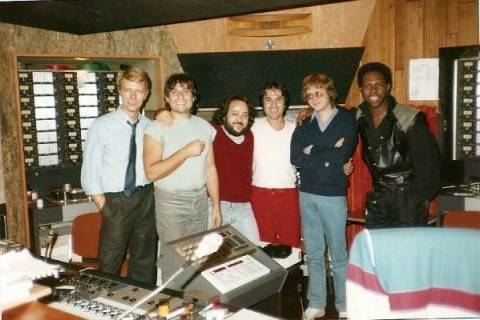
Erdal Kizilcay is a Turkish born multi-instrumentalist who spent over ten years collaborating with David Bowie on a number albums including 1987’s Never Let Me Down , 1993’s The Buddha of Suburbia and 1995’s Outside . He also played bass guitar in two consecutive world tours: The Glass Spider Tour of 1987 and 1990’s Sound + Vision Tour.
In celebration of the excessive, theatrical, some would say overblown Glass Spider Tour, a Glass Spider Band has emerged featuring two original members; Erdal himself and keyboard player Richard Cottle. They are joined by new personnel and will be recreating Bowie’s greatest hits on 17 December 2013 at the Under The Bridge venue in London. We caught up with Erdal a few weeks ago to talked to him about working with David Bowie and touring with him in the late ’80s and early ’90s.
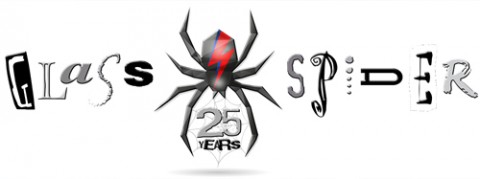
SuperDeluxeEdition: How did this new Glass Spider show come about?
Erdal Kizilcay: The company Bloomberg wanted to do a Bowie thing. Me and Richard Cottle [are involved] – he also played on that record. I did the whole album, the Never Let Me Down album. About 80% of that album is me. Bloomberg wanted to do a Bowie thing with Tom Wilcox – he’s organising this Glass Spider concert in December and he’s curator of the ICA. Next week we’re also doing Iggyfest at the ICA, since I also did the Iggy Pop album Blah Blah Blah .
SDE: Was that the first time you worked with David, on the Blah Blah Blah album?
EK: Absolutely, yes…. [pause] sorry no! We’re talking about 25 years ago, even more actually. I was called in to Montreux, to Mountain Studio to help with his demos for the Let’s Dance album. Nile Rogers was there and they needed a bass player, and I had a name for myself here in Switzerland, so they called me in. SDE: That’s interesting, so you played on the demos for Let’s Dance , but you obviously weren’t involved in the actual final sessions for the album.
EK: No, but they kept my bassline for either Let’s Dance or China Girl – one or the other, I can’t remember! Anyway, David was living in Lausanne at that time, the French part of Switzerland and I was living in Neuchatel which is not far from Lausanne, and David called me in because he knew I could play many different instruments and he had this idea to do this Iggy project. He said “we can do this easily, it’s not difficult” and actually we finished the whole album – or I finished my part of it – in two weeks. So that was the Blah Blah Blah album and I played nearly everything on it. Kevin Armstrong played some guitar stuff and [the Sex Pistol’s] Steve Jones from L.A. played a solo on one track [Cry for Love].
SDE: That Iggy Pop record was commercially quite successful and that led you to working with David on the Never Let Me Down album.
EK: Yes, I guess so.
SDE: What are your thoughts looking back on the Never Let Me Down album because lots of people – not to put too fine a point on it – don’t like it because of the ‘80s production preferring the rich heritage of his ‘70s work. Even Bowie himself has said some uncomplimentary things about it over the years. Do you have fond memories of those sessions and making that record?
EK: Well actually, yes. At the time when we were doing it David was very, very happy! He got some bad reviews from critics for the album but I didn’t even know about it, I just did what I had to do. He asked me to arrange the strings, so I arranged the strings. I played them myself, I did this, that and the other. He used to call me ‘my invincible Turk’. Those were his words. He was telling everyone “I’ve found this guy, and he can play everything”. You can read it in interviews at the time. At the same time we did film music for When The Wind Blows , a song called Girls , which was sung by Tina Turner [later used as the B-side to Time Will Crawl ], and another track for the Never Let Me Down album called Too Dizzy . With all this work David was very happy. He used to come to my place twice a week, and we would work together. But suddenly – I don’t know what happened – but I don’t think the Glass Spider Tour was that successful, from my point of view…
SDE: Not successfully in what way? Commercially, critically..?
EK: Probably, critically. To be honest with you I wasn’t really into David Bowie [before I started working with him]. I didn’t have that much information about him, I’m more a kind of jazz or jazz-rock player. I’d heard a few songs that I used to love like Space Oddity or Life On Mars , but not much more than that. We used to meet together at my studio and we’d have lunch at my house and one day he was looking at my records and said “Oh, you don’t have any records of mine, Erdal” [laughs] and I said “No, I don’t – but that’s probably why you like the way I’m playing because if I knew 100% of your stuff it probably wouldn’t work [as well]”. But anyway, with Glass Spider I read some critics and they really didn’t like it.
SDE: Personally, did you enjoy the theatrical aspect of that tour, or was it more about the music for you?
EK: I wasn’t involved in the theatrical stuff, really. But it was probably too much, too big a stage. It was the first really big thing for me, and my career and I had to go so far away – we travelled nearly the whole world. There was stress every day. Stage-wise there were five dancers and Toni Basil choreographed all that. These people were well known in the art world, or dance world but they were trying to put things into the songs were I just thought sometimes “It’s not working, man”. You could never tell these kind of things to David. He wouldn’t even listen.
SDE: Bowie’s mentioned since that time about how much stress he was under during that tour. Was that apparent to you at the time?
EK: He was stressed during Sound + Vision [the greatest hits tour that followed in 1990 – Erdal was the bass player]. You could really see that, and the concept was very different. The band were really small in the corner of the stage and the concept was more about the image and the film behind him. It was just him and Adrian Belew in front. One day he had a fight with David on-stage and broke his guitar, so that was a horrible thing. He [David] was very stressed, especially in South America. He didn’t even come to the sound checks.
SDE: You mentioned Too Dizzy earlier. Now you co-wrote that song, but David took it off the album after the first pressing was issued. You must have been a bit upset about that?
EK: He told me at the beginning that Ronnie Spector wanted to use that track. But I’ll tell you honestly that something happened, because I worked with three or four, probably five albums with David, the last one being Outside [1995], but up until now I have 24 co-written songs and it’s good that you ask me because yes, I was upset. He changed his way of being with me at the end of the recording of Outside. I don’t even know why, for what reason. We were very close friends. I don’t know if he wanted to punish me – talking about Too Dizzy – that he didn’t want me to have anything on the new release that was Never Let Me Down . That’s very possible. Yes, I was upset. From now on I don’t think I would wish to work again with David Bowie.
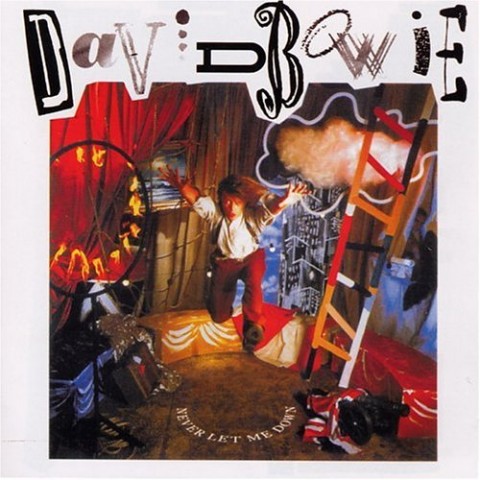
SDE: On the Outside album you’re fully credited with being a co-writer of some of those songs. You’re not complaining about that are you, you got your credit for your involvement?
EK: No, no. It’s just his behaviour was very strange. After Never Let Me Down – he wasn’t happy about Too Dizzy but we still did some other albums like Buddha Of Suburbia .
SDE: I did want to talk to you about that album, because it’s one of the most interesting projects David has worked on [post-70s] and it’s not very well known.
EK: Yes, but it’s still me again. He made the whole album and I was still his ‘invincible Turk’ and that’s why I don’t get it why the guy could turn 180 degrees. Everything I did with David was great, and if the critics didn’t like it it’s not him, it’s the other people. With musicians, producers and performers if they have success then they made everything, but if it has not really worked out for them, they are not guilty because some other people are responsible.
SDE: Is that what you think happened with Never Let Me Down ?
EK: I think so. Obviously after Never Let Me Down I did do some other things with David like The Buddha Of Suburbia and Outside .
SDE: Tell us about the Buddha of Suburbia sessions. It does seem very much you and David.
EK: It was like for Iggy Pop’s Blah Blah Blah album. He wanted me to do certain things. I was painting for him – musical lines, whatever he wanted. He knew me very well by this time, because we’d done so many albums and plus the Glass Spider world tour, so we were friends, still very good friends. So he knew exactly what he wanted and he just let me work on the thing. There was never a negative word. He had very good ideas so I was his [helping] hand if you want. So it really went very well and I still listen to the album and it was really amazing. Some beautiful stuff came out of it.
SDE: Is that your favourite work that you’ve done with David?
EK: Buddha and Outside – I really love them. The Hearts Filthy Lesson from Outside that was my very funky bassline, and The Motel with the fretless bass and the delays, has an oriental feeling. I [still] love Outside today, it’s a really great album and The Buddha Of Suburbia , so yes, they are my two favourites.
SDE: Just going back to the Glass Spider Tour, David has talked about how they set fire to the Glass Spider in a big field at the end of the tour. Were you there for that?
EK: [Laughs] I heard the same thing. It happened in New Zealand in Auckland because that was the last tour date. We came back with David together to Switzerland because he was still living in Lausanne at that time. So we were talking when we landed at the stopover in Sydney, and I said “What happened” and he said “They’re burning it”. I didn’t believe him at the time but afterwards I heard that’s what happened. I suppose it was too expensive to bring back if they weren’t using it again.
SDE: But you weren’t there to witness it?
EK: [Laughs] not in front of the fire, no.
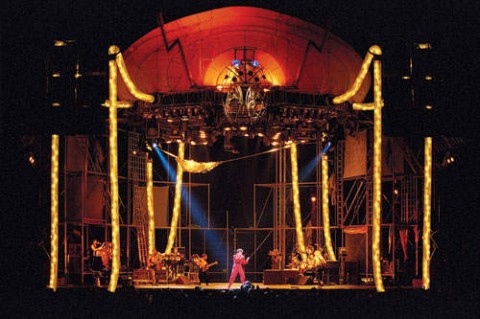
SDE: This new show in December where you are going to be part of the Glass Spider Band, what songs can we expect? Are there just going to be lots of songs from Never Let Me Down , or will there be other too. What can we expect?
EK: Yes, it won’t be especially be like the Never Let Me Down album but it will be like the Glass Spider show, because we used other songs like Heroes, Time etc. So it’s going to be the Glass Spider set list plus a song that I wrote with David called Girls. There should be something like 18-20 songs.
SDE: Who’s going to be doing all the singing then?
EK: Oh, a great friend called Simon Westbrook. He’s an amazing singer and a rather David Bowie-looking guy! We also have Richard Cottle the keyboard player who participated in the original Glass Spider tour with me. I will be interviewed on the stage by Katie Puckrick and will probably talk about memories of the tour.
SDE: What about the theatrical side of the tour. Will you be attempting to recreate anything, or just playing the songs?
EK: At the moment, just playing the songs. There was talk of having some videos behind us, but I don’t really know what’s going to happen. I’ll see next week.
SDE: Finally, one more question,Erdal. Have you listened to David Bowie’s new album The Next Day ?
EK: No. It’s been a long time. I realised it’s not working between David and me and I just let it go. I don’t want to hear about anything. That’s my personal decision, I’m not really interested in what he’s doing.
Erdal Kizilcay was talking to Paul Sinclair for SuperDeluxeEdition.
The Glass Spider Band featuring Erdal perform next week on 17 December at Under The Bridge. For more information and ticket details click here .
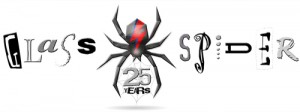
Sign Up For the SDE newsletter
SuperDeluxeEdition.com helps fans around the world discover physical music and discuss releases. To keep the site free, SDE participates in various affiliate programs, including Amazon and earns from qualifying purchases.

Related Content
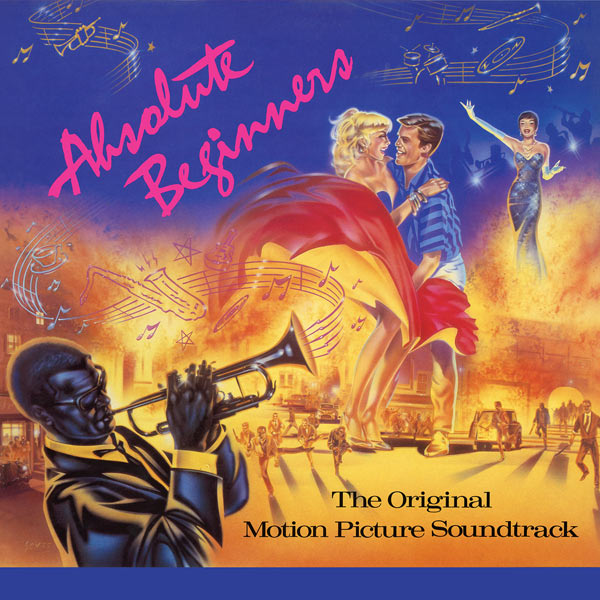
30 Apr 2020
Absolute Beginners soundtrack reissued
David Bowie led motion picture soundtrack returns The soundtrack to Julien Temple’s 1986 film…
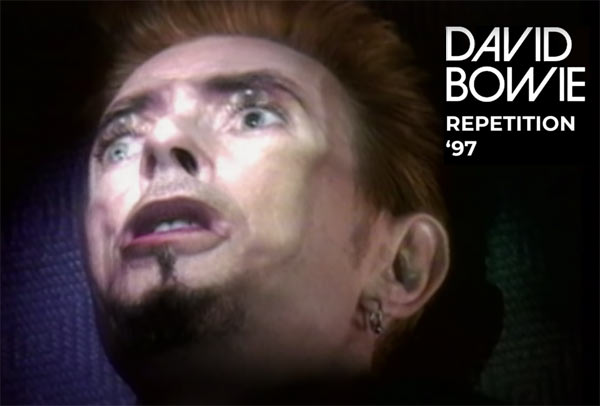
13 Apr 2020
David Bowie / Repetition ’97
Watch and listen to the unheard version of this song David Bowie‘s previously announced…
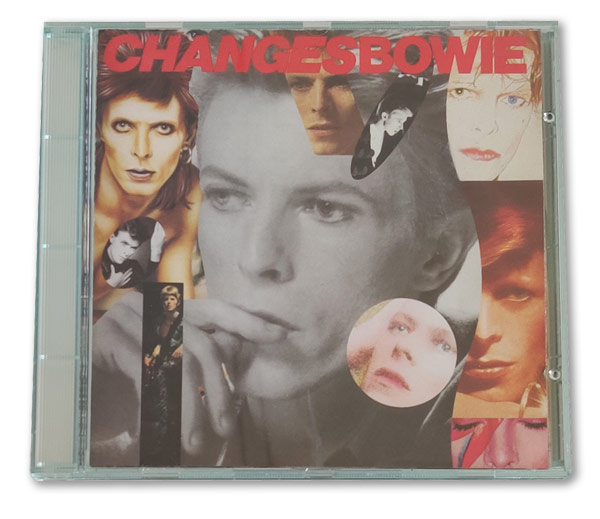
17 Mar 2020
30 Years Ago: ChangesBowie is released
SDE looks back at the 1990 Bowie compilation
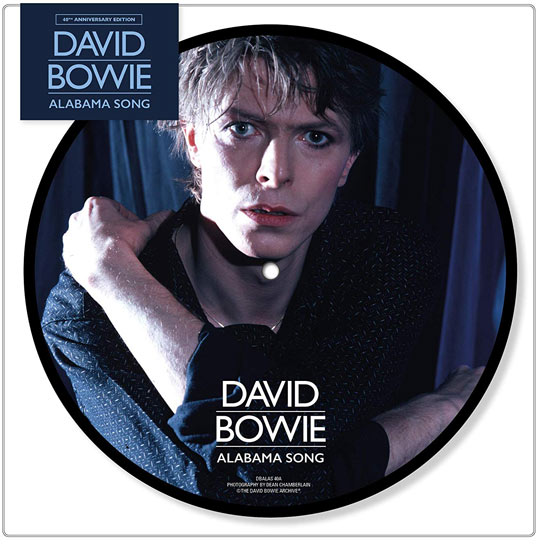
30 Dec 2019
David Bowie / Alabama Song 40th anniversary 7″ picture disc
David Bowie‘s first 45 of the 1980s was a non-album single, a cover of Kurt…
27 Comments
Sign up for the sde newsletter.
Live: Wembley Stadium, London
David Bowie performed at London’s Wembley Stadium on 19 June 1987, as part of the Glass Spider Tour.
It was the 11th date of the tour, which began on 30 May in Rotterdam , and the first of two consecutive nights at the stadium.
Bowie’s guitarists were Carlos Alomar and Peter Frampton. Erdal Kızılçay played keyboards, trumpet, congas, and violin, and Richard Cottle was on keyboards, saxophone, and tambourine. Carmine Rojas played bass guitar and Alan Childs was on drums and percussion.
Bowie returned to Wembley Stadium on 20 April 1992 for The Freddie Mercury Tribute Concert, and 9 October 1999 for NetAid.
The setlist
- ‘Up The Hill Backwards’
- ‘Glass Spider’
- ‘Up The Hill Backwards’ (Reprise)
- ‘Day-In Day-Out’
- ‘Bang Bang’
- ‘Absolute Beginners’
- ‘Loving The Alien’
- ‘China Girl’
- ‘Scary Monsters (And Super Creeps)’
- ‘All The Madmen’
- ‘Never Let Me Down’
- ‘Big Brother’
- ‘Chant Of The Ever Circling Skeletal Family’
- ‘’87 And Cry’
- ‘Time Will Crawl’
- ‘Beat Of Your Drum’
- ‘Sons Of The Silent Age’
- ‘Dancing With The Big Boys’
- ‘Let’s Dance’
- ‘Blue Jean’
- ‘Modern Love’
Also on this day...
- 2000: Live: Roseland Ballroom, New York City
- 1997: Live: Maison des Sports, Clermont-Ferrand
- 1990: Live: Richfield Coliseum, Richfield
- 1978: Live: Apollo, Glasgow
- 1974: Live: Public Auditorium, Cleveland, Ohio
- 1973: Live: Guildhall, Southampton
- 1972: Live: Civic Centre, Southampton
- 1966: Live: David Bowie and the Buzz, Brands Hatch, West Kingsdown
- 1964: Television: Ready Steady Go!
Want more? Visit the David Bowie history section .
Leave a Reply

- Statistics Stats
- You are here:
- Bowie, David
- August 9, 1987 Setlist
David Bowie Setlist at Anaheim Stadium, Anaheim, CA, USA
- Edit setlist songs
- Edit venue & date
- Edit set times
- Add to festival
- Report setlist
Tour: Glass Spider Tour statistics Add setlist
- Glass Spider Play Video
- Day-In Day-Out Play Video
- Bang Bang ( Iggy Pop cover) Play Video
- Absolute Beginners Play Video
- Loving the Alien Play Video
- China Girl ( Iggy Pop cover) Play Video
- "Heroes" Play Video
- Young Americans Play Video
- Fashion Play Video
- Scary Monsters (and Super Creeps) Play Video
- Rebel Rebel Play Video
- Beat of Your Drum Play Video
- Never Let Me Down Play Video
- The Jean Genie Play Video
- White Light/White Heat ( The Velvet Underground cover) Play Video
- Blue Jean Play Video
- Time Will Crawl Play Video
- New York's in Love Play Video
- '87 and Cry Play Video
- Let's Dance Play Video
- Fame Play Video
- Modern Love Play Video
Edits and Comments
16 activities (last edit by ExecutiveChimp , 21 Mar 2020, 17:06 Etc/UTC )
Songs on Albums
- '87 and Cry
- Beat of Your Drum
- Day-In Day-Out
- Glass Spider
- Never Let Me Down
- New York's in Love
- Time Will Crawl
- Bang Bang by Iggy Pop
- China Girl by Iggy Pop
- White Light/White Heat by The Velvet Underground
- Let's Dance
- Modern Love
- Scary Monsters (and Super Creeps)
- Loving the Alien
- Young Americans
- "Heroes"
- The Jean Genie
- Rebel Rebel
- Absolute Beginners
Complete Album stats
More from David Bowie
- More Setlists
- Artist Statistics
- Add setlist
Related News
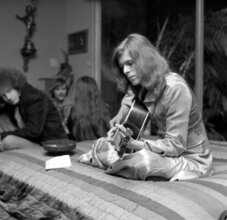
David Bowie Played a London Speakeasy for His 23rd Birthday
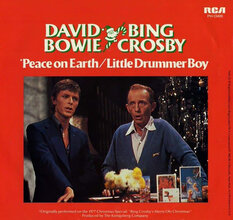
Today in 1977 David Bowie & Bing Crosby Sang Christmas Songs
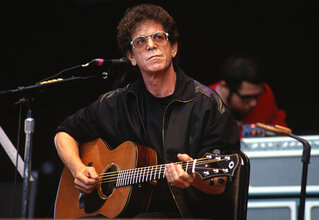
On This Day in 1997: Friends of Lou Reed Make Perfect Day '97
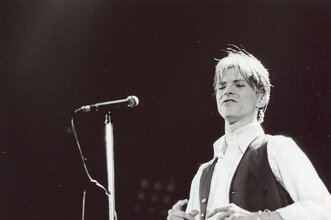
Setlist History: In 1971 David Bowie Debuted 'Changes' at 5am
Anaheim stadium.
- Siouxsie and the Banshees Add time Add time
- David Bowie This Setlist Add time Add time
David Bowie Gig Timeline
- Aug 07 1987 Spartan Stadium San Jose, CA, USA Add time Add time
- Aug 08 1987 Anaheim Stadium Anaheim, CA, USA Add time Add time
- Aug 09 1987 Anaheim Stadium This Setlist Anaheim, CA, USA Add time Add time
- Aug 12 1987 Mile High Stadium Denver, CO, USA Add time Add time
- Aug 14 1987 Civic Stadium Portland, OR, USA Add time Add time
41 people were there
- chuckburgess
- JuleighRamone
- LoveSuntheDon
- lrobertson68
- markwilson66
- Roger_Kovach
- Sherryclark70
- ThoseThingsILov
- timdevine001
- tracisjusther
- trashyashell
Share or embed this setlist
Use this setlist for your event review and get all updates automatically!
<div style="text-align: center;" class="setlistImage"><a href="https://www.setlist.fm/setlist/david-bowie/1987/anaheim-stadium-anaheim-ca-7bdc4674.html" title="David Bowie Setlist Anaheim Stadium, Anaheim, CA, USA 1987, Glass Spider" target="_blank"><img src="https://www.setlist.fm/widgets/setlist-image-v1?id=7bdc4674" alt="David Bowie Setlist Anaheim Stadium, Anaheim, CA, USA 1987, Glass Spider" style="border: 0;" /></a> <div><a href="https://www.setlist.fm/edit?setlist=7bdc4674&step=song">Edit this setlist</a> | <a href="https://www.setlist.fm/setlists/david-bowie-6bd6ee66.html">More David Bowie setlists</a></div></div>
Last.fm Event Review
[url=https://www.setlist.fm/setlist/david-bowie/1987/anaheim-stadium-anaheim-ca-7bdc4674.html][img]https://www.setlist.fm/widgets/setlist-image-v1?id=7bdc4674[/img][/url] [url=https://www.setlist.fm/edit?setlist=7bdc4674&step=song]Edit this setlist[/url] | [url=https://www.setlist.fm/setlists/david-bowie-6bd6ee66.html]More David Bowie setlists[/url]
Tour Update
Marquee memories: alien ant farm.
- Alien Ant Farm
- Apr 28, 2024
- Apr 27, 2024
- Apr 26, 2024
- Apr 25, 2024
- Apr 24, 2024
- Apr 23, 2024
- FAQ | Help | About
- Terms of Service
- Ad Choices | Privacy Policy
- Feature requests
- Songtexte.com
'Spider-Man: Across the Spiderverse Live in Concert' Announces Tour Dates
'spider-man: across the spider-verse' live in concert tour dates announced, 'mufasa: the lion king' trailer no. 1, 'welcome to wrexham's ryan reynolds and rob mcelhenney say hugh jackman is jealous of their bromance, 'dance moms' stars react to first et interview (exclusive), 'dance moms' stars share where they stand with abby lee miller (exclusive), 'dance moms' chloe lukasiak on abby lee miller and trauma she says she endured (exclusive), 'dance moms' paige and brooke hyland on getting closure from reunion special (exclusive), miranda lambert shocks stagecoach with surprise reba mcentire appearance, joey king reveals her favorite track from taylor swift's 'ttpd' (exclusive), jax taylor and brittany cartwright give update on where their relationship stands (exclusive), mike myers says there's 'absolutely' more story to tell in a possible 'austin powers 4' (exclusive), nicole kidman beams over daughters' rare appearance at her afi honor (exclusive), colin jost's best white house correspondents' dinner jokes, 'rhoc' alum taylor armstrong reacts to shannon beador and john janssen-alexis bellino romance drama, why da'vine joy randolph has her awards season trophies packed away (exclusive), joe alwyn 'not in touch' with taylor swift following 'tortured poets' release (source), anthony ramos & reba mcentire on getting emotional over 'the voice' singers' 'heartbreaking' stories, matthew mcconaughey makes rare red carpet appearance with all 3 kids, jon bon jovi is leaving another tour ‘up to god’ as he recovers from vocal cord surgery (exclusive), king charles returning to royal duties amid cancer battle, a new 50+ city u.s. tour will kick off beginning this fall..
Get ready, web-heads, Spider-Man: Across the Spider-Verse is returning to screens! On Monday, it was announced that after the success of last year's live orchestral concert tour of Into the Spider-Verse , its sequel will be getting the same treatment with a 50+ U.S. city tour.
Spider-Man: Across the Spider-Verse: Live in Concert will kick off in London on June 30, before touring the rest of the United Kingdom. The tour will then make its U.S. debut in the fall, starting on Sept. 1 in Nashville, Tennessee.
Audiences will get to watch Across the Spider-Verse presented on a HD screen, accompanied by a range of musicians and instrumentalists performing music from the film's score and soundtrack live to picture. This will include an orchestra, a scratch DJ on turntables, percussion and electronic instruments.
" Across The Spider-Verse is probably the most exciting, ground breaking and impactful score I've written," says the Emmy-winning composer, Daniel Pemberton, who created the film's score. "I've always believed that there should be no barriers to music, but it's rare to get the opportunity that you get within the Spider-Verse -- where else could you have powerful orchestral themes side by side with punk drum solos, virtuoso record scratching next to twisted electronics, off-kilter whistling next to hip-hop beats?"
A press release shares that the Oscar-nominated composer took influence for both Spider-Verse film scores from "growing up amid the London rave scene in the 90s, where he regularly immersed himself in ambient and techno nights." He also drew inspiration from "the scratch DJ's at The Blue Note Club in East London, where he first witnessed scratching vinyl being used in an artistic form. This, coupled with heavy-drumming and punk guitars, gives the soundtrack its unique sound, fusing genres to make something bold and unparalleled which will be brought to life in an exhilarating style in these live concerts."
"Watching the film with the live band performing in a huge room of people is one of the most thrilling ways to experience it and it's a huge honor to know that audiences are going to get a show that delivers a unique emotional hit they will hopefully remember for a long, long time after," Pemberton adds.
Across the Spider-Verse shows Miles Morales (voiced by Shameik Moore) meeting more Spider-People as he reunites with Gwen Stacy (Hailee Steinfeld) for a new adventure. This time, he's battling the multiverse-traversing The Spot and dealing with an adversary that hits closer to home -- Oscar Isaac's Miguel O'Hara, aka Spider-Man 2099 and his Spider-Force of multiverse protectors, which includes Issa Rae's Jessica Drew , Spider-Punk (Daniel Kaluuya), and Spider-Man India (Karan Soni).
Metro Boomin curated the film's beloved soundtrack, which features appearances from Future, Nas, Swae Lee, James Blake, Lil Wayne, Lil Uzi Vert and more.
Tickets for Spider-Man: Across the Spider-Verse: Live in Concert will be available starting May 3. For the complete tour schedule visit spiderverseinconcert.com.
GET THE ET NEWSLETTER
RELATED CONTENT:
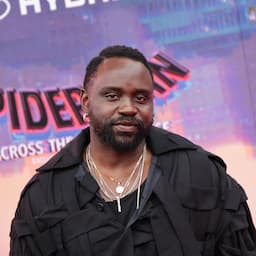
Brian Tyree Henry Talks Importance of Representation in 'Spider-Verse'
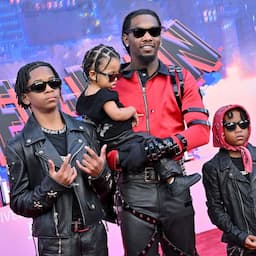
Offset Carries His and Cardi B's Son Wave on 'Spider-Verse' Red Carpet
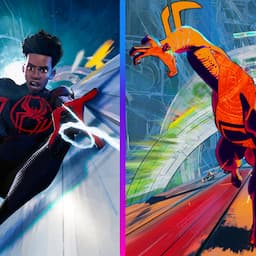
Watch the New 'Spider-Man: Across the Spider-Verse' Trailer

- Spider-Man: Across the Spider-Verse
Latest News
Updates on celebrity news, tv, fashion and more.
- Preplanned tours
- Daytrips out of Moscow
- Themed tours
- Customized tours
- St. Petersburg
Moscow Metro
The Moscow Metro Tour is included in most guided tours’ itineraries. Opened in 1935, under Stalin’s regime, the metro was not only meant to solve transport problems, but also was hailed as “a people’s palace”. Every station you will see during your Moscow metro tour looks like a palace room. There are bright paintings, mosaics, stained glass, bronze statues… Our Moscow metro tour includes the most impressive stations best architects and designers worked at - Ploshchad Revolutsii, Mayakovskaya, Komsomolskaya, Kievskaya, Novoslobodskaya and some others.
What is the kremlin in russia?
The guide will not only help you navigate the metro, but will also provide you with fascinating background tales for the images you see and a history of each station.
And there some stories to be told during the Moscow metro tour! The deepest station - Park Pobedy - is 84 metres under the ground with the world longest escalator of 140 meters. Parts of the so-called Metro-2, a secret strategic system of underground tunnels, was used for its construction.
During the Second World War the metro itself became a strategic asset: it was turned into the city's biggest bomb-shelter and one of the stations even became a library. 217 children were born here in 1941-1942! The metro is the most effective means of transport in the capital.
There are almost 200 stations 196 at the moment and trains run every 90 seconds! The guide of your Moscow metro tour can explain to you how to buy tickets and find your way if you plan to get around by yourself.

COMMENTS
The Glass Spider Tour was a 1987 worldwide concert tour by the English musician David Bowie, ... one of the dancers from the tour, but the two split up without being wed after four years. "[The Glass Spider Tour] was the first time I'd had the opportunity to spend that kind of money and do shows like that! The first time since Diamond Dogs ...
In 2010, one critic called the Glass Spider Tour one of the "top concert tour design[s] ... As a result, the tour incorporated dancers, music and multi-media elements such as stage projections and props. The set itself was designed to look like a giant spider and stood over 60 feet (18.3m) high, and was described at the time as "the largest ...
An interview with Viktor Manoel, Glass Spider Tour dancer. Hello Viktor. How did your dancing career begin? My career began with Mexican Folkloric dancing. I had an argument with my dad regarding my personal life choices, so I moved out and got into dancing. It was at that time that I performed "The Deer Dance" - then I turned 18 and ...
THE GLASS SPIDER WORLD TOUR. Opening on the 30th May 1987, The Glass Spider World Tour visited fifteen countries and produced eighty-seven performances, as well as nine promotional press shows. ... The dancers were: Melissa Hurley, Constance Marie, Craig Allen Rothwell (aka Spazz Attack), Viktor Manoel and Steven Nicholas (aka Skeeter Rabbit). ...
Watch David Bowie Perform on the Glass Spider Tour. The entire ensemble rehearsed for 12 hours a day in New York before kicking off the tour on May 30, 1987 at Stadion Feijenoord in Rotterdam, the ...
David Bowie performs during the Glass Spider Tour in 1987. ( Frederic Meylan / Getty) April 27, 2017. In his 1980 song "Ashes to Ashes," David Bowie sang of how his long-running character, the ...
The production calls for five dancers along with Mr. Bowie and his six-man band, performing under (and at one point, atop) the canopy of a giant ''spider'' with eight lighted legs, moving jaws and ...
Details regarding the passing on Saturday of Stephen Nichols, better known as Skeeter Rabbit, remain unclear. Bowie fans will remember Skeeter for his breathtaking dance moves as part of David Bowie?s Glass Spider troupe on the 1987 world tour. His work with DB was captured for posterity via the official film of the tour and in the Time Will ...
Under the dangling legs of a huge (60 feet high by 64 feet wide), translucent spider, Mr. Bowie, a five-piece band and five dancers will present stadium-scale, rock-driven, imagistic music theater ...
The Glass Spider Tour was a 1987 worldwide concert tour by the English musician David Bowie, launched in support of his album Never Let Me Down and named for that album's track "Glass Spider". It began in May 1987 and was preceded by a two-week press tour that saw Bowie visit nine countries throughout Europe and North America to drum up public interest in the tour.
David Bowie 's 1987 Glass Spider tour is widely seen as the one of the worst things he ever did, right up there with his 1967 single "The Laughing Gnome," his 1984 cover of "God Only Knows ...
David Bowie: Glass Spider: Directed by David Mallet. With David Bowie, Carlos Alomar, Alan Childs, Richard Cottle. David Bowie's Glass Spider Tour show, held in November 1987 at the Sydney Entertainment Centre, Australia.
Erdal (red jeans) helping with "Let's Dance" demos back in 1982. Erdal Kizilcay is a Turkish born multi-instrumentalist who spent over ten years collaborating with David Bowie on a number albums including 1987's Never Let Me Down, 1993's The Buddha of Suburbia and 1995's Outside.He also played bass guitar in two consecutive world tours: The Glass Spider Tour of 1987 and 1990's ...
19 June 1987 Glass Spider Tour, Live No Comments. David Bowie performed at London's Wembley Stadium on 19 June 1987, as part of the Glass Spider Tour. It was the 11th date of the tour, which began on 30 May in Rotterdam, and the first of two consecutive nights at the stadium. Bowie's guitarists were Carlos Alomar and Peter Frampton.
Take an inside look into one the greatest concert tours of the 80's, David Bowie's Glass Spider Tour.https://roadiesnrockstars.comhttps://www.amazon.com/Book...
Private FootageMaine RoadBack Then This Was The Home Of Manchester City
ADDITIONAL TOUR CONTENT: Top Concert Designs. With a team that included lighting designer Allen Branton, set designer Mark Ravitz, and video director Christine Strand, Bowie's Glass Spider Tour was all spectacle, including using scaffolding for multiple levels for the band and dancers and, of course, the 40'-diameter spider dominating the stage.
Tour: Glass Spider Tour statistics Add setlist. Setlist. share setlist Glass Spider. Play Video; Day-In Day-Out. Play Video; Bang Bang (Iggy Pop cover) Play Video; Absolute Beginners. ... Let's Dance 2. Scary Monsters… and Super Creeps 2. Tonight 2. Young Americans 2 "Heroes" 1. Aladdin Sane 1. Diamond Dogs 1. Others 1. Tour stats ...
The Glass Spider Tour was a 1987 worldwide concert tour by English musician David Bowie, launched in support of his album Never Let Me Down. It began in May ...
Spider-Man: Across the Spider-Verse: Live in Concert will kick off in London on June 30, before touring the rest of the United Kingdom. The tour will then make its U.S. debut in the fall, starting ...
Private Sightseeing Tours in Moscow: Check out 6 reviews and photos of Viator's Private Moscow Metro Tour
The Moscow Metro Tour is included in most guided tours' itineraries. Opened in 1935, under Stalin's regime, the metro was not only meant to solve transport problems, but also was hailed as "a people's palace". Every station you will see during your Moscow metro tour looks like a palace room. There are bright paintings, mosaics ...
Moscow is home to some extravagant metro stations and this 1.5-hour private tour explores the best of them. Sometimes considered to be underground "palaces" these grandiose stations feature marble columns, beautiful designs, and fancy chandeliers. Visit a handful of stations including the UNESCO-listed Mayakovskaya designed in the Stalinist architecture. Learn about the history of the ...
Moscow has some of the most well-decorated metro stations in the world but visitors don't always know which are the best to see. This guided tour takes you to the city's most opulent stations, decorated in styles ranging from neoclassicism to art deco and featuring chandeliers and frescoes, and also provides a history of (and guidance on how to use) the Moscow metro system.